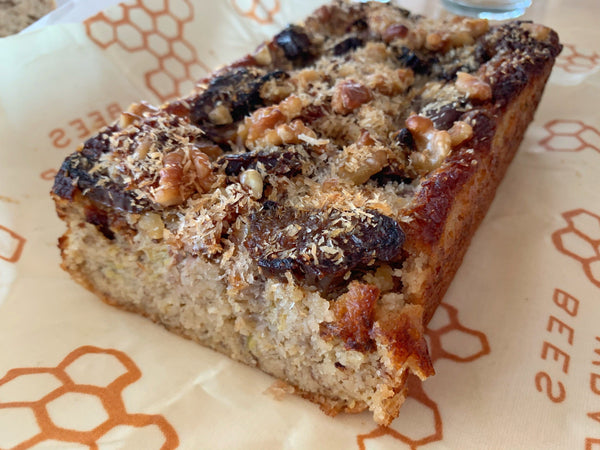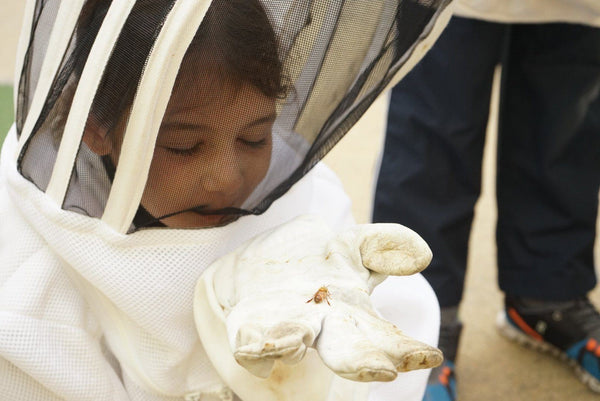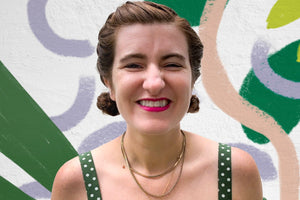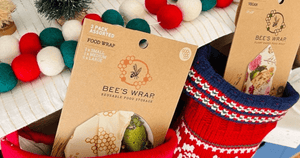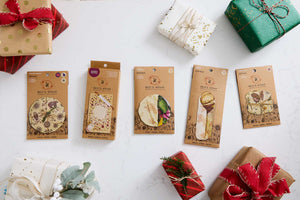In the kitchen with julia clancy

When we gathered in a Vermont farmhouse earlier this fall for one of our latest photoshoots, we were thrilled to welcome chef Julia Clancy into the fold. Julia arrived with armfuls of the most beautiful Vermont fall produce, an infectious love of food, and a truly joyful, generous approach to cooking and eating.
Julia grew up loving food and cooking, and after college, she headed to Cork, Ireland, to attend the intensive cooking school headed by chef Darina Allen. There, Julia spent twelve-hour days in the kitchen — mastering tarts, planning menus, preserving food, roasting the perfect chicken, and more.

Next she headed for San Francisco, where Julia interned at Chez Panisse and then landed a job at Zuni Cafe. When life brought her to Vermont, she started writing her own menus for pop-ups at a local farm, writing about food and drink for our local alternative weekly, and then working in the test kitchen at EatingWell magazine.
We caught up with Julia this month to talk about food and her tips for everything from low-waste cooking to feeding a crowd.

On her menu for our Bee’s Wrap feast
When Julia developed her menu for our Bee’s Wrap shoot, she took into consideration a few elements. First, a sense of place — her food is always driven by where she is, and what ingredients are fresh, vibrant and colorful. The spread she whipped up was as beautiful as it was tasty, including (but not limited to!) a pressed picnic sandwich, smoky red beet yogurt spread, a “halvsies” salad with an herby vinaigrette, and a gorgeous citrus rye tart with mascarpone cream.


Julia says she’s inspired in her cooking to find a balance of richness and freshness — something warming and zippy, with the right play of acids and fresh herbs. She loves to cook family-style meals.
“I want to make food that is beautiful and seasonal and compelling,” said Julia — but not so beautiful as to be untouchable. “I want you to put your elbows on the table, bring your appetite, and go to town.”

On reducing waste in the kitchen
“Understanding how to be a good cook is understanding how to be an efficient cook,” Julia said. Reducing waste as a chef just makes sense: it’s good for the environment, and it’s also good for the bottom line. “If you’re throwing out half of your ingredient into your compost or your trash can, you’re losing a lot of money as a cook.”
Julia’s training and professional experience has centered on kitchens where zero- or low-waste cooking is the norm, and when she moved to Vermont, she found that ethic shared by food-lovers and farmers.

“What the home cook can learn from people who cook professionally is how to use more of the ingredient,” she said. That means using the tops of radishes and carrots in a way that’s actually delicious. Julia gushes about broccoli stems — her favorite part of the vegetable. “Peel it like you would a carrot, slice it, and it’s a gold mine.”
Save potato skins to make chips. Use apple skins to make vinegar. And if that’s a little “eager mcbeaver,” as Julia put it, start with using the freezer to cut down on waste. She freezes herb stems from basil, cilantro, and parsley, then stuffs them in the cavity of a chicken or under a fillet of fish. She freezes the rinds from her parmesan cheese to chuck into soups, and vegetable peels to simmer into future stocks.
On Bee’s Wrap in her kitchen
“I save bits and ends of everything — everything,” Julia told us. She’s not kidding: The rinds of parmesan, fresh and woody herb stems, apple peels, citrus peels, halved avocados. The only downside to this thrift, Julia said, was that she was using more tin foil, Ziplock bags, and plastic wrap than she’d like. She first encountered Bee’s Wrap as a recipe developer and tester at EatingWell, and quickly made the switch to using it in her own kitchen.

She uses the larger wraps to store extra greens, herbs, and herb stems. She also uses the the larger wraps to make pie crust or fresh pasta without needing to scrape down her counter.

“I like that Bee's Wrap gets better with age. Better! Less waxy, more nimble, very second nature to use,” said Julia. “It's also beautiful; it makes me happy to use something as attractive as it is functional as it is sustainable.”
On cooking for a crowd
During a time of year when many are entertaining, we asked Julia for her tips for cooking for a crowd. She gravitates toward dishes that hold their integrity at room temperature, so she isn’t rushing to nail the timing of a meal at the same time she’s enjoying the company of guests. She’ll make a salad, cover it, and keep it in the refrigerator until dressing before serving. She loves one-pot, family-style meals that can be doctored with a few accoutrements.

Think: grain salads that get better as they sit, or a big salad with seasonal veggies and a zippy dressing that can be made ahead. Little touches — like a fennel or chili oil drizzled over a big pot of soup — help make a meal more special without radically increasing the effort.
On advice for novice cooks
Julia loves cooking — but she’s quick to be realistic about the act of feeding one’s self and one’s family.

“I don’t think everyone has to love cooking,” she said. “I think that puts a little too much pressure on the act of cooking itself.” Sometimes it’s late, you’re exhausted, and cooking is a chore. She recommends that first, individuals think about what kind of cook they are. Do you want to be on your feet for thirty minutes, actively cooking a quick meal? Do you want to throw ingredients on a sheet pan and walk away for an hour? “It’s not one size fits all,” said Julia.
Then, she said, find a few tools to make your life easier in the kitchen. Start with a sharp chef’s knife and a cutting board. Add a couple of clean kitchen towels, a skillet and a pot, and a wooden spoon. Find the hacks that work for you.
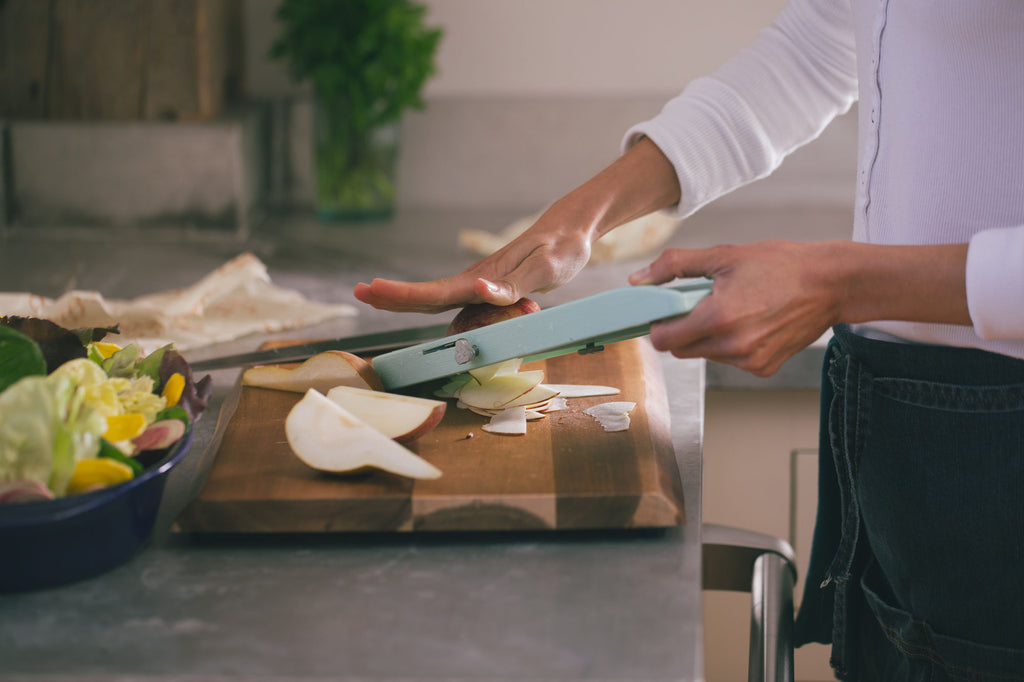
“If you don’t want to chop, grate a tomato and an onion [with a box grater] into a skillet and that’s the basis of a sauce,” she said.
And finally, learn the basics. “You don’t need an elaborate recipe,” Julia said. “Just get a couple of techniques down. You can go online and get a recipe for anything. And that’s exciting. But it’s also unnecessary. If you can get certain techniques down — how to cook rice, or how to poach chicken breasts — it gives you a lot of freedom if you feel like you have mastery. Then you can start getting more experimental.”

